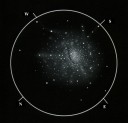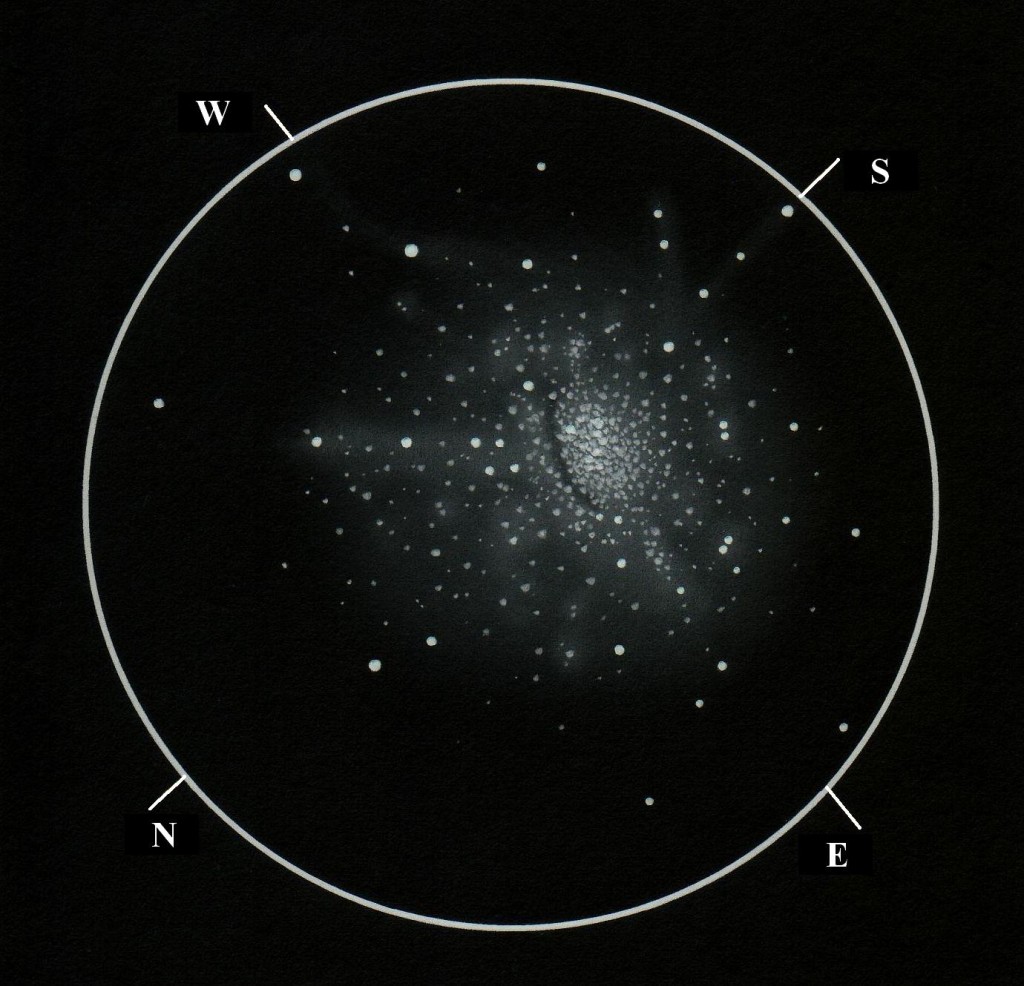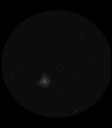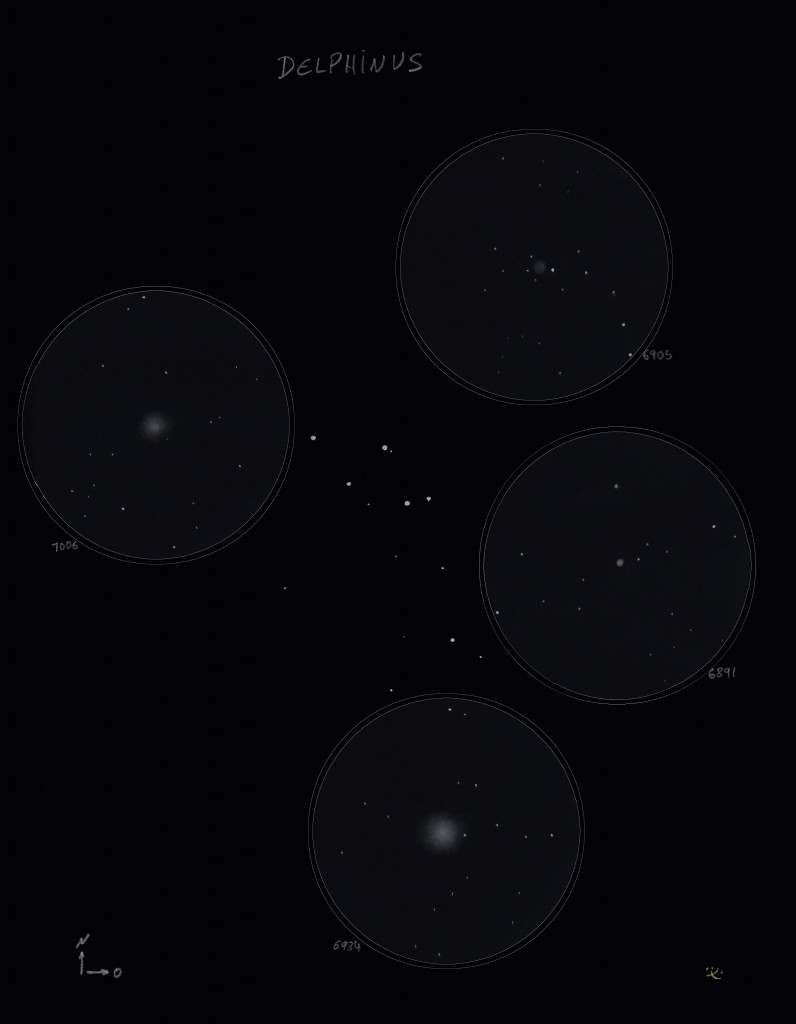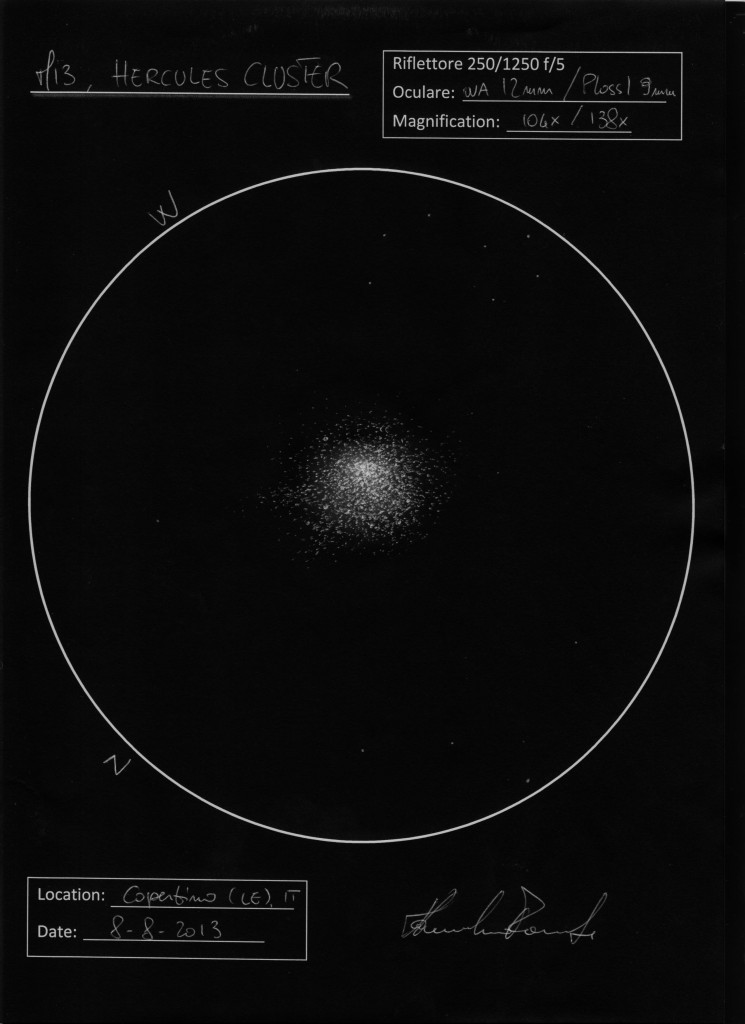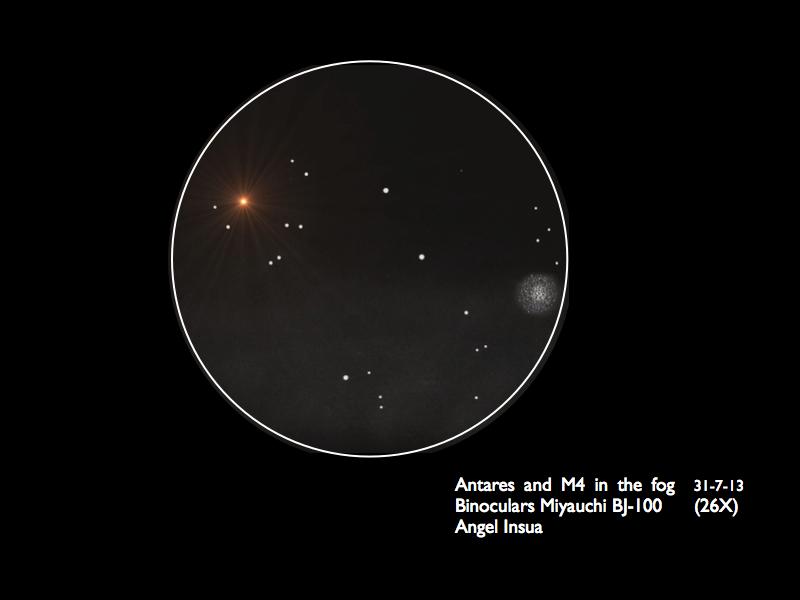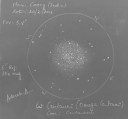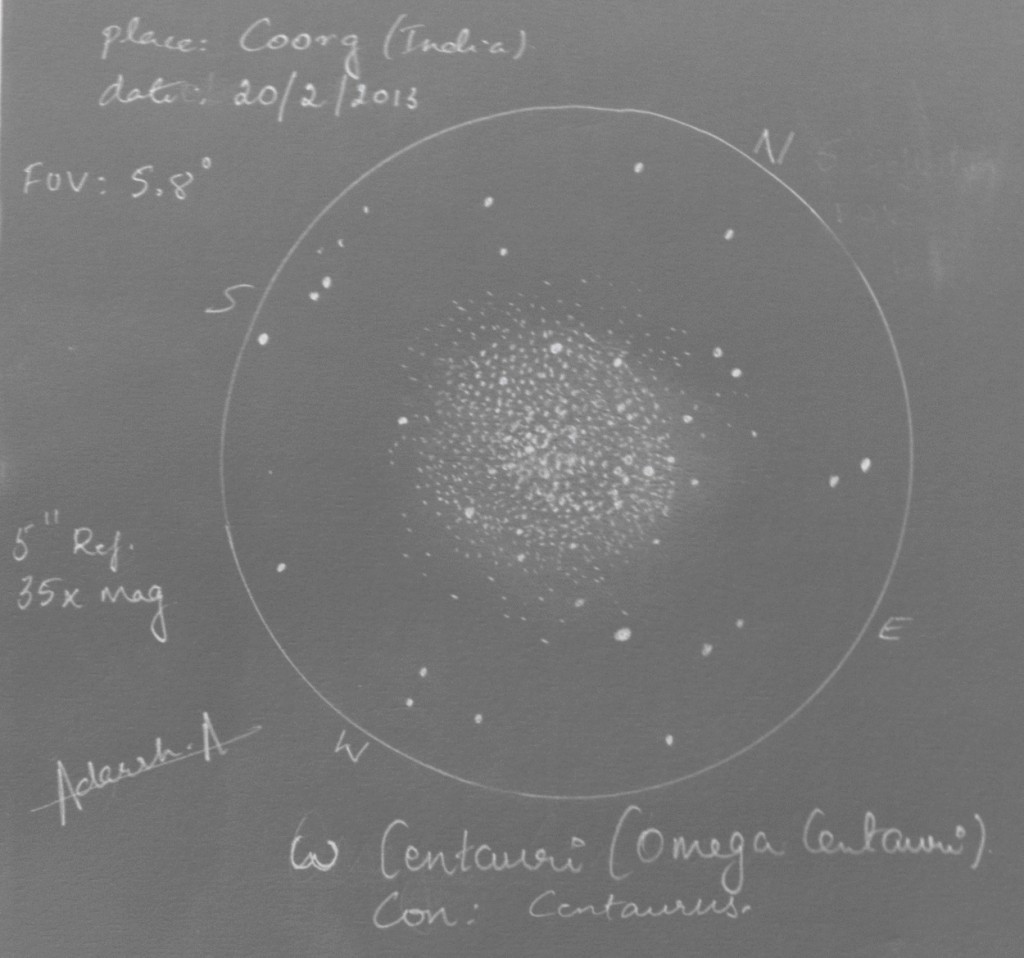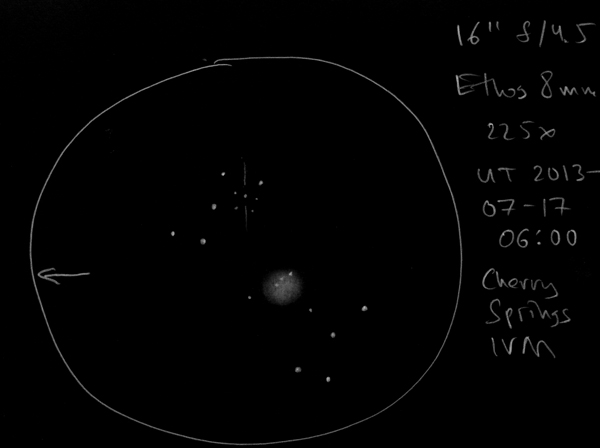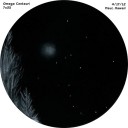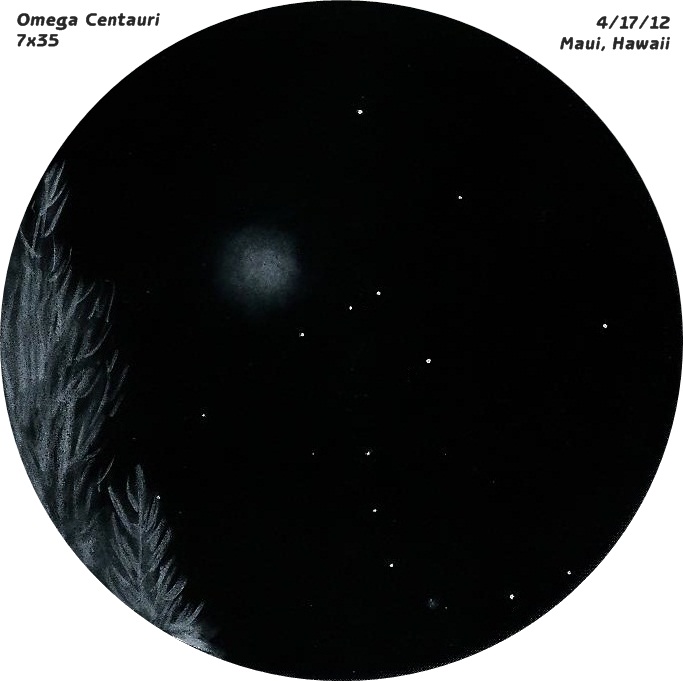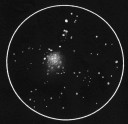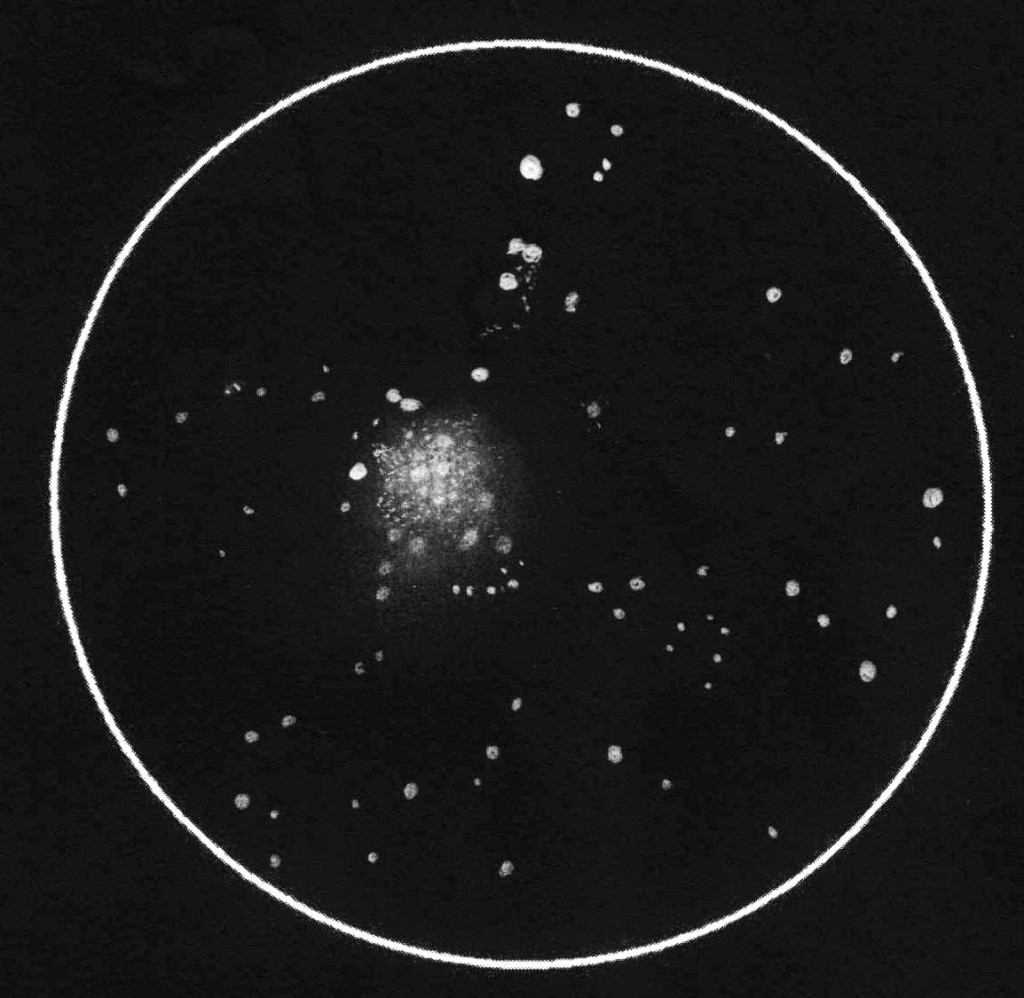
Hello,
this is my first submission to the ASOD.
Object Name: NGC5139-NGC104-M13
Object Type: globular clusters
Location: Namibia
Date: August, 2nd 2013
Media: graphite pencil for the initial draft then scan and digital work for the final sketch.
Instrument: Home-made 14″ travel-scope, F/D 5, dobsonian. Eyepiece 20mm Plössl. Field 34′.
Observing conditions: Slight turbulence, good transparency, no light pollution.
Comment:
Under the wonderful sky of Namibian desert, one of the dryest and darkest of the world, I’ve foolishly decided to draw the 3 big.
Scaring idea for a sketcher, as the globular clusters are known for being undrawable. Obviously the idea was not to spot each star, but only to make a rendering comparison of these 3 big, mainly interesting for northern observers who have not often the possibility to look at those famous southern globular clusters in Centauri and Tucanae constellations. With the same instrument, the same night and the same duration of the observation (half an hour each), Omega Centauri and 47 Tucanae are bright and deeply resolved, whereas the Herculis cluster looks like a fuzzy patch of light grains. Poor dethroned cluster!
Hope it tickles your traveller spirit!
I wish ASOD’s team a happy new year and clear skys!
Best regards.
Laurent THENARD.
France.

